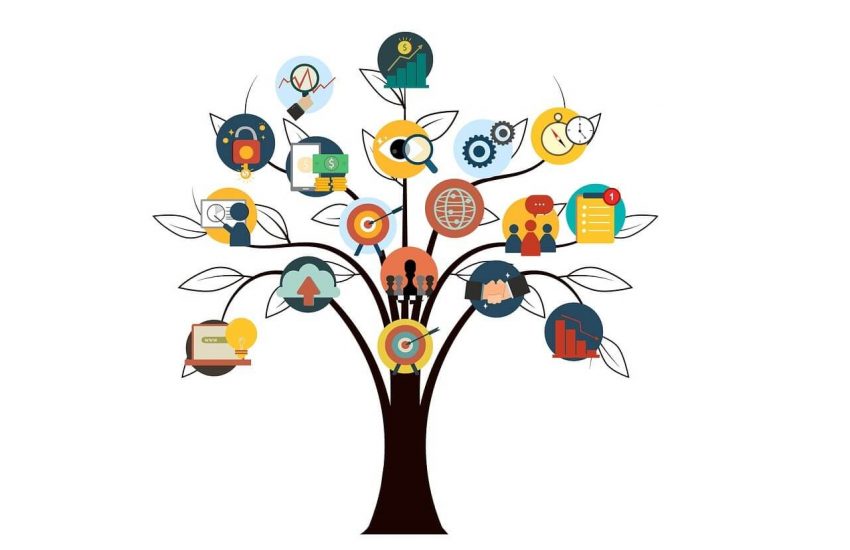How Inclusion and Diversity Can Improve Your Business
To some, inclusion and diversity in the workplace are just the latest buzzwords in human resources. For others, this way of operating is a given. But the savviest employers see diversity and inclusion in terms of the tremendous possibilities it offers everyone.
Focusing on inclusion and diversity initiatives and integrating them fully into the core values of the company not only propels the company, but also contributes to the development of employees, customers and the community by creating a cycle of positivity that benefits all parties involved.
But how do you recognize a good inclusion and diversity program? What are the measurable benefits? How to implement such a program?
Inclusion and diversity at work: general definition
Diversity goes beyond characteristics such as age, race, gender, sexual orientation, physical disability, cultural heritage, nationality and other factors that generally come to mind. mind. It is more than the visible differences between people. Lise Edwards, Director of Inclusion and Diversity at Robert Half, emphasizes the need to accommodate differences in worldview, views, opinions and ways of solving problems and making decisions, which should be seen as part of inclusion and diversity.
Inclusion and diversity are also about personality, way of working, family composition, education and experience. Giving a voice – and listening – to people with diverse personal and professional backgrounds is essential to reap the rewards of workplace diversity and an inclusive culture.
“At Robert Half, inclusion is at the heart of how we lead, and that embraces everyone, not just under-represented groups,” says Edwards. Essentially, inclusion is about inviting everyone from interns to executives to take part in all discussions, whether they are about business initiatives or whether they are casual conversations, in person or through video conferencing applications.
But it also means fostering a collaborative and welcoming work environment, recognizing that everyone can have great ideas and respecting each other’s points of view. “Adopting an inclusive posture makes diversity accessible and brings the concept to life,” says Edwards.

Benefits of an inclusive and diverse workforce
Some of the benefits of inclusion include the sense of empowerment it inspires. “When we feel included – I’m not talking about just being invited to the table, but actually having our views heard – we are motivated to participate in a broader and deeper way,” says Edwards. We then take the lead and strive for excellence where some might be content to do a satisfactory job. ”
And by combining inclusion and diversity, you propel your staff recruitment and retention efforts and your bottom line, to name just a few. The benefits have been highlighted by studies:
- A McKinsey & Company (2018) report that takes a keen interest in diversity finds that companies with diverse workforces increase their chances of achieving financial performance above industry standards by 35% .
- According to a 2017 survey by Deloitte, companies that embed the principles of inclusion in their hiring, promotion, development, leadership and team management practices generate revenue per employee up to 30% higher and are more profitable than their competitors.
Fostering inclusion and diversity
How can you get your employees to embrace and reap the rewards of inclusion and diversity in the workplace? Here are some tips:
1. Seek their buy-in. Diversity and inclusion should touch all aspects of your business and go beyond talking. Inclusion and diversity in the workplace are more than checkboxes; it’s a mindset that must reach all staff, from senior management to employees. A great way to get this mindset to spread is to lead by example – and draw attention to the actions you take and why (at least initially). Employees and managers must not only welcome, but also seek diverse voices to fuel business initiatives and projects of all types. By showing the team your openness to each other’s input and the good ideas that flow from it, you greatly contribute to the adoption of this openness and reluctance is reduced.
2. Promote a sense of belonging. Employees who feel they can safely express their opinions and views will be more likely to come up with bold ideas. Being totally yourself at work, without fear or shame – recognizing your vulnerabilities as well as your strengths – helps strengthen bonds between colleagues and showcase each other’s differences.
3. Diversify hiring. Of course, you want to hire the best person available for the job, but put aside any prejudices you might have about the best candidate. Having diverse hiring managers and interviewers helps avoid unconscious bias. Also, take a look at your current team. Is it gender imbalanced? This could tip the balance if a candidate makes a difficult choice.
4. Diversify promotions. Along with your diversified hiring practices, pay attention to the people who move up the ranks within your company in order to maintain balance at the management level.
5. Promote the benefits of diversity and inclusion in the workplace. A corporate culture where all voices are heard – and truly heard – encourages people with diverse professional and personal backgrounds to apply for your job. vacancies. On your website and in your job descriptions, highlight your inclusion and diversity efforts and any outside recognition you have received: this sends a strong message. Post jobs on diversity-focused job sites, such as Diversity Jobs and DiversityWorking, to access a wide range of candidates.
6. Practice Pay Equity. Pay equity disparities drive a wedge between segments of your workforce. Perception can also be a factor, especially if certain groups of employees receive more recognition than others. Spread wealth and appreciation to foster cohesion.
7. Be multigenerational. With age, no doubt comes experience and wisdom, but with youth comes different perspectives and a spirit of innovation. Include workers of all ages and experience levels in projects, to cover all angles. And while you’re at it, engage voices across gender, race, and more.
“Inclusion and diversity – individually and collectively – help make people better, in their professional and personal lives,” adds Ms. Edwards. And with conscious, engaged, and motivated teams, there are many ways your business could be a winner, perhaps even beyond current reality and statistics.




